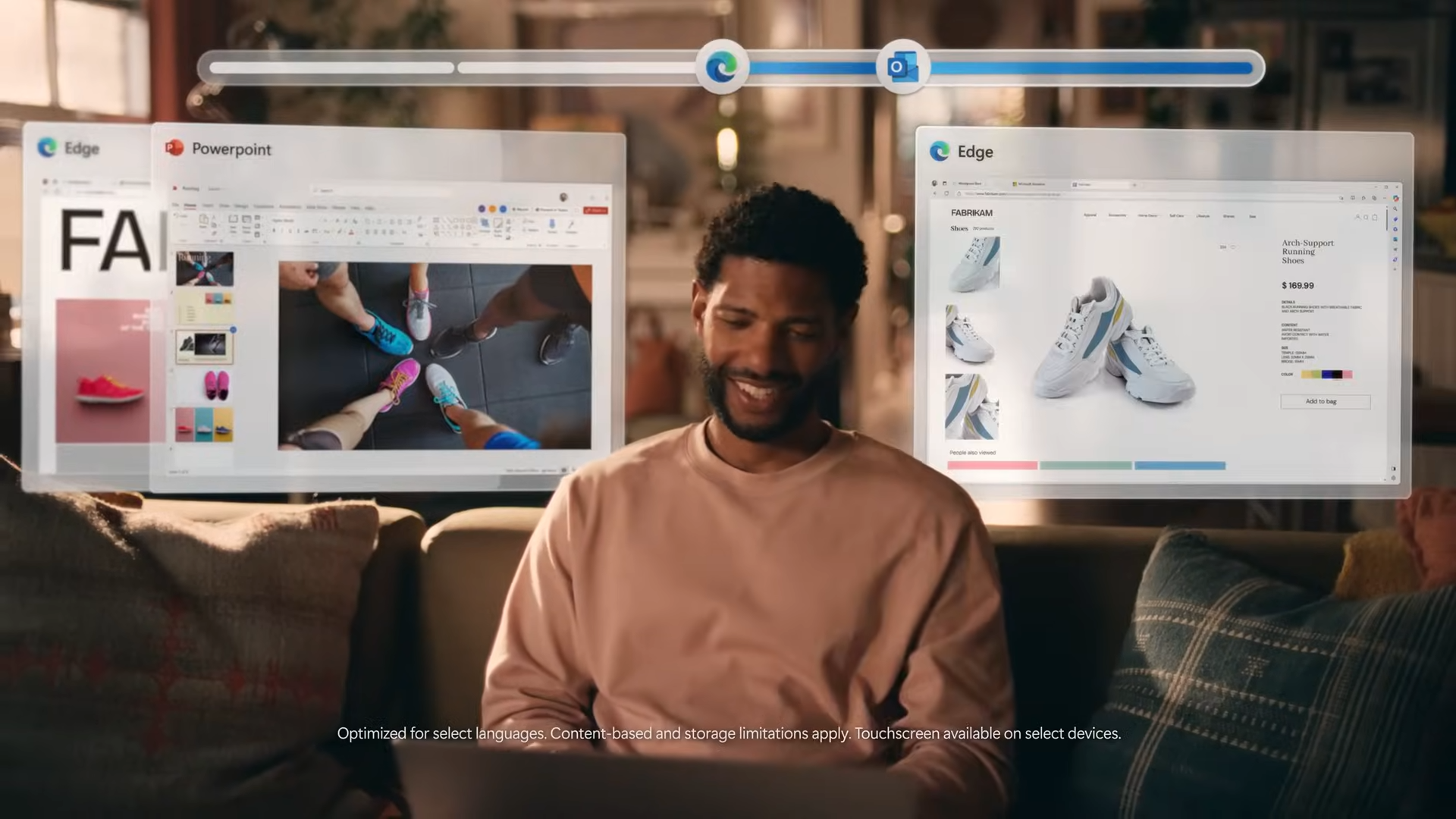Laptop Mag Verdict
The Razer Blade 15's sleek new look is refreshing, and the laptop offers long battery life. But the display could be brighter, and the keyboard isn't comfortable.
Pros
- +
Svelte design
- +
Strong gaming performance
- +
Solid battery life
Cons
- -
Dimmer-than-average display
- -
Shallow keyboard
Why you can trust Laptop Mag
The Razer Blade has never looked better. The laptop ($2,599 as tested; $1,899 to start) has gone through a complete redesign that's made it thinner and sleeker than ever, with thin bezels around a 15-inch display, a massive touchpad and, of course, a colorful keyboard with Razer's Chroma lighting running on the latest version of Razer Synapse. You also get longer battery life than competing machines provide. But I wish the screen were brighter, and the thinner design means a keyboard with less travel. Overall, however, the new Blade looks as good as it performs.
Design
Razer has completely retooled the look of the Blade, and it really is drop-dead gorgeous. The corners are slightly more squared off, giving it an edgier look (no pun intended) that's still classy. The chassis is still black aluminum, but Razer's green, tri-headed-snake icon is still the lower-back tattoo of laptop logos, and its presence here does kill some of the elegance.
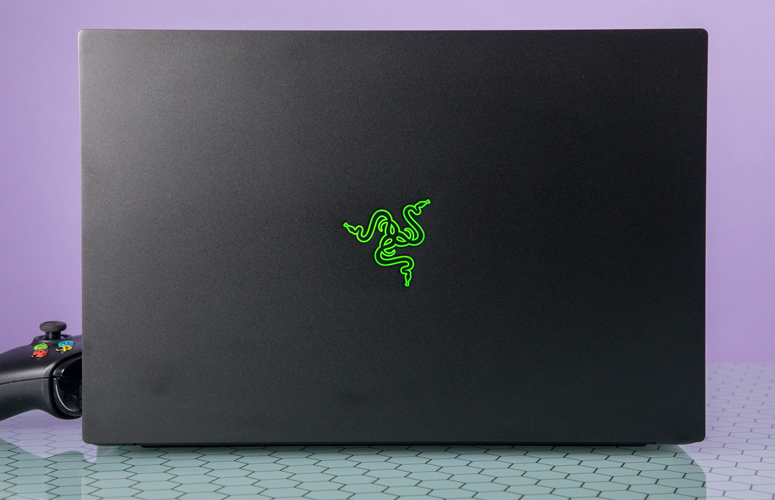
Lifting the lid reveals a 15.6-inch display with minimal bezel (though there's still enough up top to keep the webcam there), a Chroma-enabled keyboard with RGB lighting flanked by speakers, and a large trackpad on the black aluminum deck.
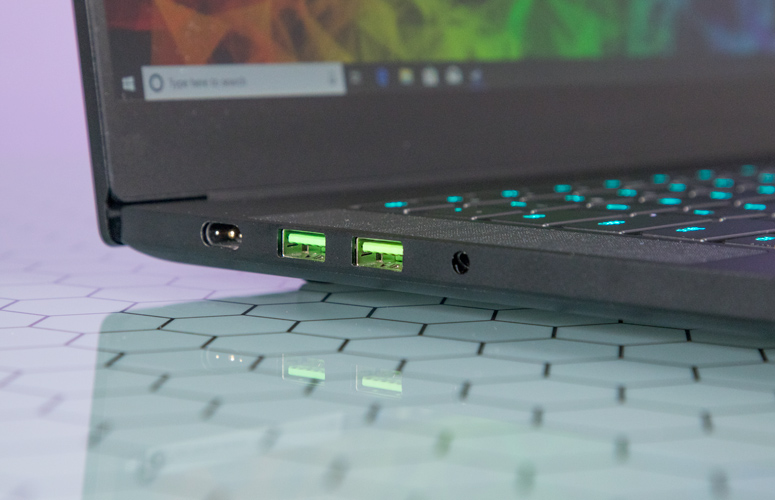
At 4.6 pounds and 14 x 9.3 x 0.7 inches, the Blade is still portable and svelte. The MSI GS65 Stealth Thin is lighter (4.1 pounds, 14.1 x 9.8 x 0.7 inches), but both the PowerSpec 1510 (6.5 pounds, 15.3 x 10.8 x 1.3 inches) and the Asus ROG Zephyrus M GM501 (5.5 pounds, 15.1 x 10.3 x 0.8 inches) are larger and heavier.
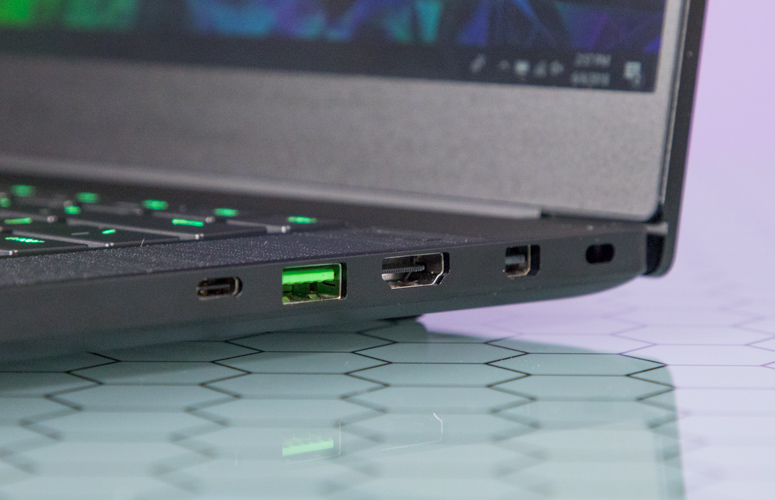
On the left side of the laptop, there's a pair of USB 3.1 ports, a headphone jack and a power jack. While USB Type-C can't deliver enough power for a gaming notebook, Razer's proprietary adapter is a similar shape and is reversible, which I appreciated. The right side of the laptop has a Thunderbolt 3 port (which you could plug into a graphics amp, if you so choose), a USB 3.1 port, HDMI output, a mini DisplayPort and a Kensington lock slot.
Display
The 15.6-inch, 144-Hz full-HD screen on the Razer Blade is perfectly usable, and it looks great with such minimal bezel. But it's not as bright or as vivid as competing gaming-notebook displays. When I watched a 1080p trailer for Mission: Impossible - Fallout, I could make out Henry Cavill's back sweat (gross) in a fight scene, but the skies over the movie's European locales weren't as blue and clear as they should have been. When I played Middle-earth: Shadow of War, the green grasses around an orc fortress weren't as lively as on other displays, and shadows in a fortress muted colors.
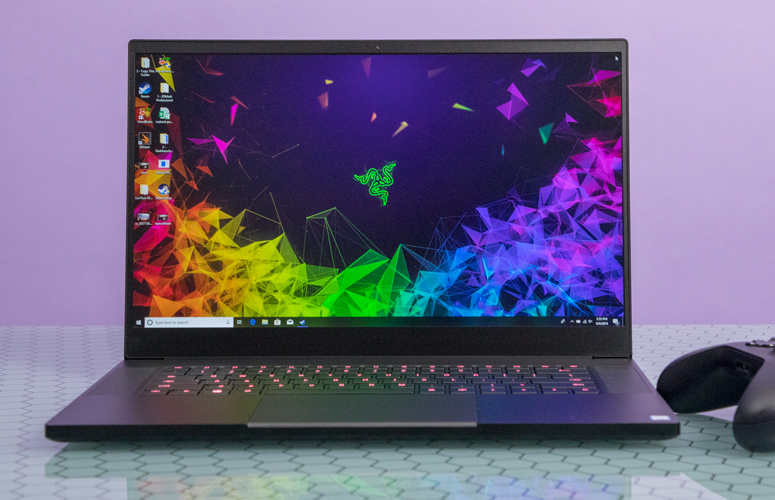
Razer's display covers 112 percent of the sRGB color gamut, falling short of the premium-gaming average of 133 percent, as well as the PowerSpec 1510 (113 percent), the Asus ROG
Zephyrus M GM501 (120 percent) and the MSI GS65 Stealth Thin (150 percent).
MORE: Laptops with the Best Display Brightness
The Blade's panel is also dimmer than the rest of the field, registering an average of 260 nits on our light meter. The average is 281 nits, and it trails the Zephyrus (286 nits), the Stealth Thin (293 nits) and the PowerSpec (306 nits).
Keyboard and Touchpad
With just 1 millimeter of travel and 72 grams required to actuate the keys, the keyboard on the new Razer Blade isn't all that comfortable. I bottomed out constantly, and at 103 words per minute on the 10fastfingers.com typing test, I was slightly slower than my usual 107 wpm. My error rate also doubled from 2 percent to 4 percent.
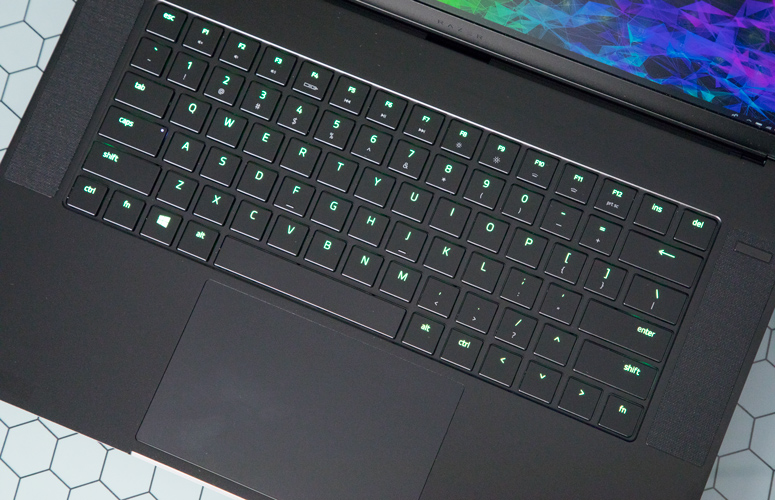
The Blade has a really spacious 5.0 x 3.1-inch touchpad with Microsoft's Windows 10 Precision drivers. It instantly responded to every gesture I threw at it, from simple pinch-to-zooms to four-finger swipes to open Task View and the Timeline.
Audio
The Blade's speakers produce clear sound, but I wish they were louder. I listened to Hozier's "Take Me to Church," and while the vocals, keys and background chorus were balanced, the sound barely filled a midsize conference room. That's plenty usable, but I prefer a bit more sound. It sounded louder when I played Middle-earth: Shadow of War, but footsteps were hard to hear over clear forces and loud swords clanging.
MORE: I Spent More Than $200 on Headphones: You Should Too
The laptop comes with Dolby Atmos software preloaded, but the audio didn't get any better when I fiddled with those settings.
Gaming, Graphics and VR
With Nvidia's GeForce GTX 1070 Max-Q graphics, the Blade can tackle most intensive games on high settings. When I played Middle-earth: Shadow of War at 1080p on Ultra settings, it ran between 58 and 63 frames per second. Dropping the settings down to Very High got me a smoother 69 to 89 fps.
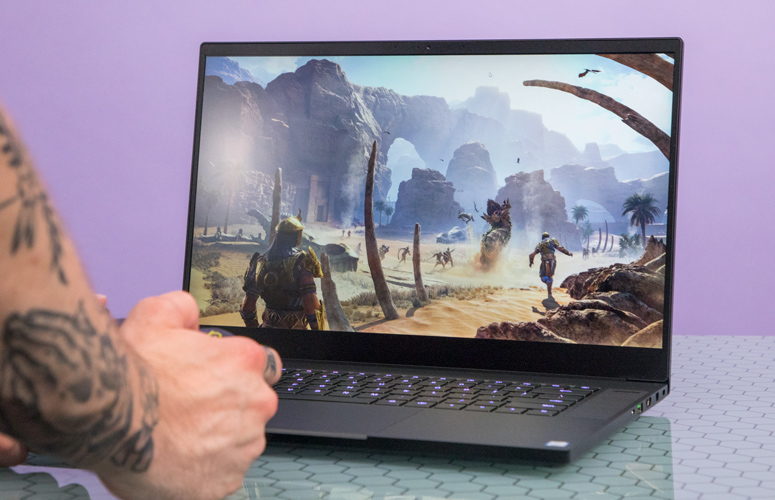
Razer's laptop ran the Rise of the Tomb Raider (1080p, Very High) benchmark at 77 fps, handily surpassing the premium-gaming average (57 fps), the PowerSpec 1510 ( 56 fps, GTX 1070), the Asus ROG Zephyrus M GM501 (53 fps, GTX 1070 Max-Q) and the MSI GS65 Stealth Thin (44 fps, GTX 1070 Max-Q).
Razer's laptop ran the Rise of the Tomb Raider (1080p, very high) benchmark at 77 fps, handily surpassing the premium-gaming-laptop average.
On the Hitman benchmark (1080p, Ultra), the Blade ran the game at 82 fps, falling below the average (85 fps) and the Zephyrus (88 fps) but besting the PowerSpec (60 fps) and the Stealth Thin (79 fps).
The Blade ran Grand Theft Auto V at 66 fps, beating the PowerSpec (60 fps) but falling below the Zephyrus (70 fps) and the average (76 fps)
MORE: The Best PC Games to Play Right Now
On the SteamVR performance test, the Blade scored a 10 out of 11, making it a solid option for an Oculus Rift or HTC Vive.
Performance
Our Razer Blade came with an Intel Core i7-8750H CPU, 16GB of RAM and a 512GB M.2 NVMe PCIe SSD. That's plenty for your average workload. I had 25 tabs open in Google Chrome, including one streaming a 1080p episode of Last Week Tonight with John Oliver, and didn't see any hint of a slowdown.
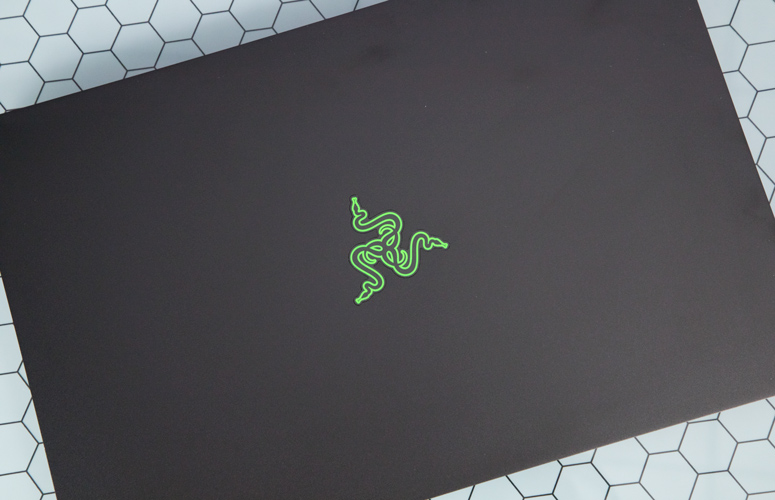
On the Geekbench 4 overall performance test, the Blade earned a score of 19,011, which is higher than the premium-gaming laptop average of 17,372 as well as the scores from the MSI GS65 Stealth Thin (17,184, Intel Core i7-8750H) and the PowerSpec 1510 (14,223, Intel Core i7-7700HQ). The Asus ROG Zephyrus M GM501 was faster (20,590, Intel Core i7-8750H).
The Blade took 12 seconds to transfer 4.97GB of mixed media files, for a rate of 424 MBps. That's a little slower than the average (486.8 MBps) and the Zephyrus (509 MBps), but the PowerSpec (391.5 MBps) and the Stealth Thin (193.3 MBps) were slower to copy files.
It took Razer's laptop 40 seconds to pair 65,000 names and addresses in our Excel macro, which is faster than the average (0:44), the Stealth Thin (0:54) and the PowerSpec (1:08) but slower than the Zephyrus (0:35).
MORE: The Best Headsets for Immersive Gaming
Lastly, it took the Blade 11 minutes and 46 seconds to convert a 4K video to 1080p in HandBrake, which is slower than the average (10:02) and the Zephyrus (9:43) but speedier than both the Stealth Thin (12:01) and the PowerSpec (14:00).
Battery Life
The Blade ran for 5 hours and 54 minutes on Laptop Mag Battery Test 2.0, making it slightly longer-lasting than other gaming notebooks. The test continuously browses the web, watches videos and runs through graphics tests at 150 nits of brightness. The premium-gaming average is 3:35, the Asus ROG Zephyrus M GM501 ran for 2:47 and the MSI GS65 Stealth Thin came in just behind at 5:40.
Heat
The Razer Blade runs just a little warmer than I'd like. After we streamed 15 minutes of HD video from YouTube, the bottom of the laptop measured 96 degrees Fahrenheit, which is just over our 95-degree comfort threshold. It measured 94 degrees between the G and H keys and 84 degrees on the touchpad.
MORE: Laptops with the Longest Battery Life
When I played Middle-earth: Shadow of Mordor, the keyboard reached 110 degrees, the touchpad climbed to 90 degrees and the bottom measured a scorching 129 degrees.
Webcam
The images from the new Razer Blade's 720p webcam are a bit on the dim side. In a photo I took at my desk, I appeared in shadow, and my light-blue shirt appeared slightly darker on-screen. However, a few wrinkles in my shirt and the popcorning on our ceiling appeared really sharp.
Software and Warranty: The New Synapse
Razer has kept the preinstalled software on the Blade to a minimum. The big deal here is Razer Synapse 3. This is the first laptop we've received with Version 3 of the software, which allows you to control the keyboard lighting (Razer calls this Chroma), customize macros and check on system performance. The new version is far more difficult to use than Synapse 2, with lots of hidden features, but you can get it to do all of the same things the old version did.
The new Synapse 3 software allows you to control the keyboard lighting, customize macros and check on system performance.
Otherwise, the rest of the preinstalled software is what you'll find on any Windows 10 PC, including two versions of Candy Crush, as well as Disney Magic Kingdoms and Hidden City: Hidden Object Adventure.
MORE: The Best Laptops for Every Need
Razer sells the 15-inch Blade with a one-year warranty. See how the laptop performed on our Tech Support Showdown and Best and Worst Gaming Brands ranking.
How Much Does a Razer Blade (15-Inch) Cost?
The 15-inch Razer Blade I reviewed -- which has an Intel Core i7-8750H CPU, 16GB of RAM, Nvidia GeForce GTX 1070 Max-Q graphics, a 512GB SSD, and a 1080p, 144-Hz display -- costs $2,599.
Downgrading that to a 256GB SSD shaves the price down to $2,399. A model with GTX 1060 Max-Q graphics and a 512GB SSD is $2,199.
MORE: Best Laptops Under $500
The base model -- which has GTX 1060 Max-Q graphics, a 256GB SSD and a 60-Hz, 1080p display -- is $1,899. A $2,899 model with GTX 1070 graphics, a 512GB SSD, and a 4K, 60-Hz touch-screen display will be available later in June.
Bottom Line
The Razer Blade's new design makes it an absolute stunner. Razer continues to be one of the few laptop makers regularly challenging Apple in the design department -- the Blade's thin design and minimal bezels make it a beauty. We also appreciated that it lasts longer than other gaming notebooks on a charge. However, the display should be brighter for this much dough.
The Blade isn't the only thin gaming notebook in town, however. The MSI GS65 Stealth Thin is almost as small, and lasts nearly as long, but includes a more vivid display. It's also cheaper, at $2,199 for a similar configuration.
But if you care a lot about looks and Razer's Chroma colors, the new 15-inch Blade will serve you well.
Credit: Laptop Mag
Razer Blade (2018) Specs
| Bluetooth | Bluetooth 5.0 |
| Brand | Razer |
| CPU | 2.2GHz Intel Core i7-8750H |
| Company Website | www.razer.com |
| Display Size | 15.6 |
| Graphics Card | Nvidia GeForce GTX 1070 with Max-Q Design (8GB) |
| Hard Drive Size | 512GB SSD |
| Hard Drive Speed | n/a |
| Hard Drive Type | M.2 PCIe NVMe SSD |
| Highest Available Resolution | 3840 x 2160 |
| Native Resolution | 1920x1080 |
| Operating System | Windows 10 Home |
| Optical Drive | None |
| Optical Drive Speed | n/a |
| Ports (excluding USB) | Lock Slot, HDMI, USB 3.1, Mini DisplayPort, Thunderbolt 3, Combo Headphone/Mic Jack |
| RAM | 16GB |
| RAM Upgradable to | 32GB |
| Size | 14 x 9.3 x 0.7 inches |
| Touchpad Size | 5.0 x 3.1 inches |
| USB Ports | 4 |
| Video Memory | 8GB |
| Warranty/Support | one-year warranty |
| Weight | 4.6 pounds |
| Wi-Fi | 802.11ac |
| Wi-Fi Model | Intel Wireless-AC 9260 |
